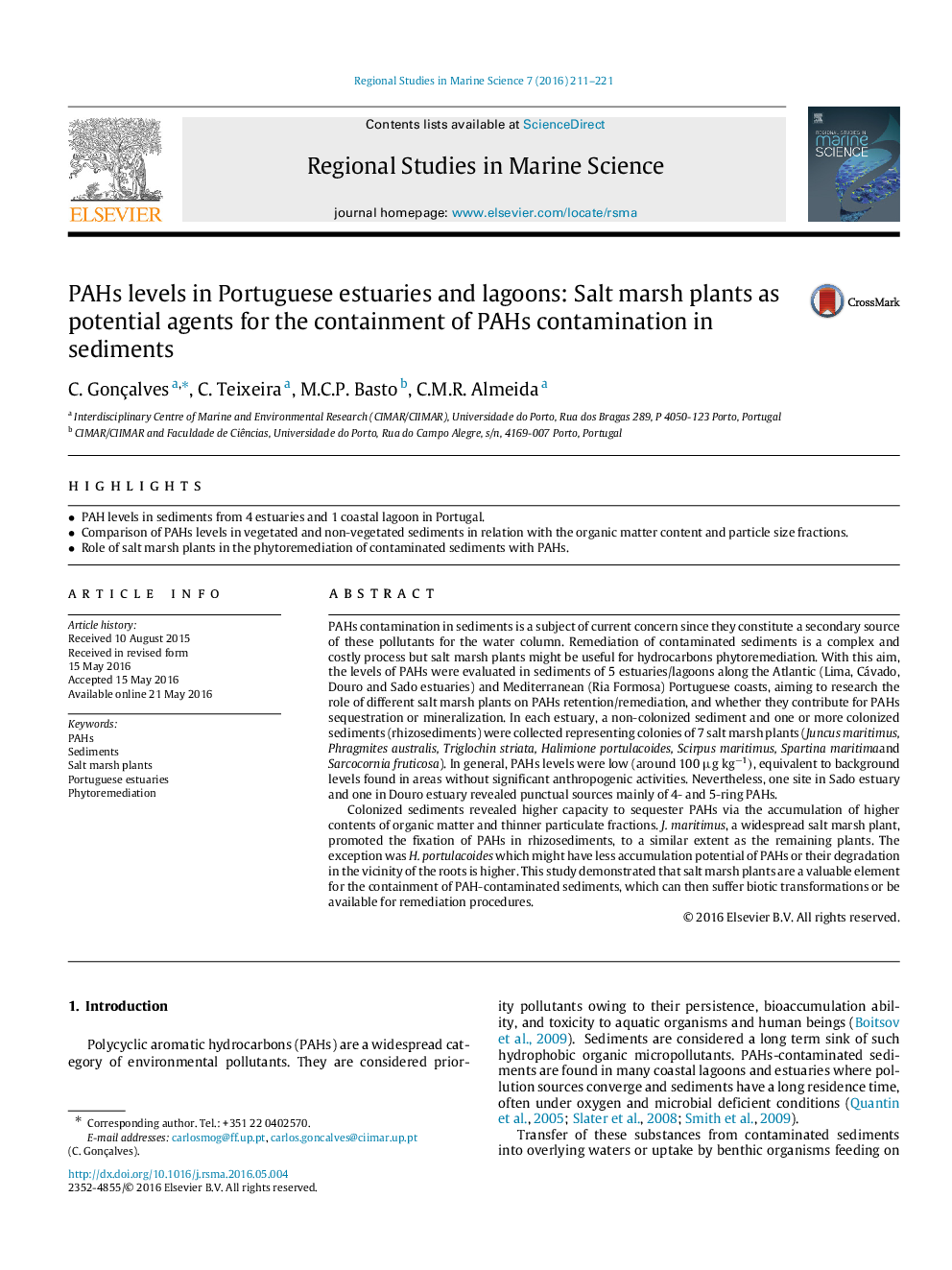| کد مقاله | کد نشریه | سال انتشار | مقاله انگلیسی | نسخه تمام متن |
|---|---|---|---|---|
| 6363274 | 1622820 | 2016 | 11 صفحه PDF | دانلود رایگان |

- PAH levels in sediments from 4 estuaries and 1 coastal lagoon in Portugal.
- Comparison of PAHs levels in vegetated and non-vegetated sediments in relation with the organic matter content and particle size fractions.
- Role of salt marsh plants in the phytoremediation of contaminated sediments with PAHs.
PAHs contamination in sediments is a subject of current concern since they constitute a secondary source of these pollutants for the water column. Remediation of contaminated sediments is a complex and costly process but salt marsh plants might be useful for hydrocarbons phytoremediation. With this aim, the levels of PAHs were evaluated in sediments of 5 estuaries/lagoons along the Atlantic (Lima, Cávado, Douro and Sado estuaries) and Mediterranean (Ria Formosa) Portuguese coasts, aiming to research the role of different salt marsh plants on PAHs retention/remediation, and whether they contribute for PAHs sequestration or mineralization. In each estuary, a non-colonized sediment and one or more colonized sediments (rhizosediments) were collected representing colonies of 7 salt marsh plants (Juncus maritimus, Phragmites australis,Triglochin striata, Halimione portulacoides, Scirpus maritimus, Spartina maritimaand Sarcocornia fruticosa). In general, PAHs levels were low (around 100 μg kgâ1), equivalent to background levels found in areas without significant anthropogenic activities. Nevertheless, one site in Sado estuary and one in Douro estuary revealed punctual sources mainly of 4- and 5-ring PAHs.Colonized sediments revealed higher capacity to sequester PAHs via the accumulation of higher contents of organic matter and thinner particulate fractions. J. maritimus, a widespread salt marsh plant, promoted the fixation of PAHs in rhizosediments, to a similar extent as the remaining plants. The exception was H. portulacoides which might have less accumulation potential of PAHs or their degradation in the vicinity of the roots is higher. This study demonstrated that salt marsh plants are a valuable element for the containment of PAH-contaminated sediments, which can then suffer biotic transformations or be available for remediation procedures.
Journal: Regional Studies in Marine Science - Volume 7, September 2016, Pages 211-221